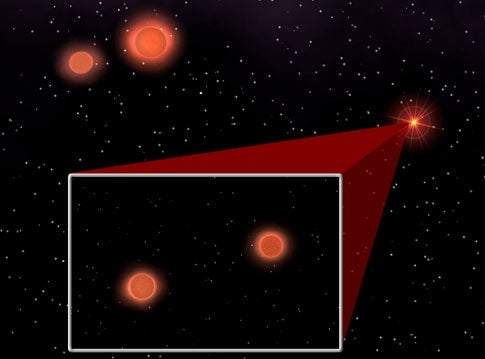A survey of M dwarfs in the Ophiuchus star-forming region has revealed four new pairs of young, low-mass stars with separations similar to the distance between Earth and the Sun. The find raises intriguing questions about the presence and habitability of planets in such systems.
“These very closely spaced, young, low-mass star pairs are really exciting,” says Lisa Prato at Lowell Observatory in Flagstaff, Arizona. “We can accurately measure the mass ratios and, ultimately, the component masses of these pairs, along with their abundance and other properties. These measurements give us new information about star and planet formation in regions just now being probed at this level of detail and resolution.” Prato summarized the results January 10 at the American Astronomical Society meeting in Seattle.
The study is the culmination of 3 years of observations using the 10-meter Keck II telescope in Hawaii. The study focused on a sample of 33 young M stars — the coolest, lowest-mass stellar class — in the Ophiuchus molecular cloud, approximately 450 light-years away. Prato estimates the stars’ masses range from 30- to 50-percent that of the Sun. The systems are so close, the companions could not be imaged directly, but betray their presence in the systems’ spectra. One of the new pairs is itself a member of a complex quadruple-star system.
This research is the first analysis of young, low-mass, so-called spectroscopic binaries at infrared wavelengths. “These young, exceptionally-small-separation binary stars … will help to determine the potential for planet formation in habitable zones,” Prato explains. A star’s habitable zone is the span of distances where water on an earthlike planet would remain in a liquid state much of the time.
Where could planets form in such systems? “It might be possible to have planets very far away orbiting both stars,” Prato explains. “On the other hand, if the spectroscopic binary is spaced widely enough, could planets possibly form close to one star? In any case, all this complexity throws a wrench in the works, thus making it even more important to know how many of these systems are out there in the nearby star- and planet-forming regions like Ophiuchus.”










